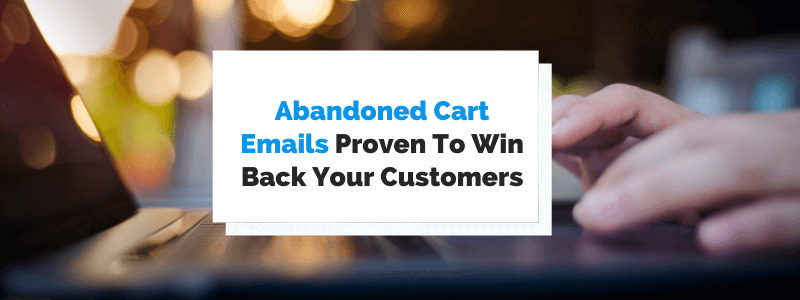If you sell your products or services online, you’ve undoubtedly encountered a frustrating occurrence —an abandoned cart on your website.
Customers sometimes pick some items and then change their minds for one reason or another and don’t finish the purchase.
However, the good news is that they still showed interest, and you can use that to your advantage.
You can send abandoned cart emails to your customers to encourage them to return and increase your revenue. In this article, we’ll look at ten examples of emails and their methods to win back customers. Let’s get to it!
- Attract Them With a Subject Line
- Leverage the Power of Call-To-Action
- Show Them What They’re Leaving Behind
- Make It Feel Urgent
- Offer Alternatives, Just in Case
- Persuade Them With Good Reviews
- Offer a Discount or Free Shipping
- Use Inside Jokes With Customers
- Include Wordplay With Your Brand
- Remind Them Their Items Are Safe With You
- Conclusion
Attract Them With a Subject Line
A subject line is the first thing your customers see when they open their inbox, so its attractiveness can be a significant factor in bringing your customers back to their carts.
Words you use in your subject line are essential; they can determine whether someone opens an email or deletes it, unread.
According to research by Klaviyo, abandoned cart emails with subject lines that contain phrases along the lines of “you left something behind” perform the best. They have an opening rate of 47,57%, almost 4% higher than average.
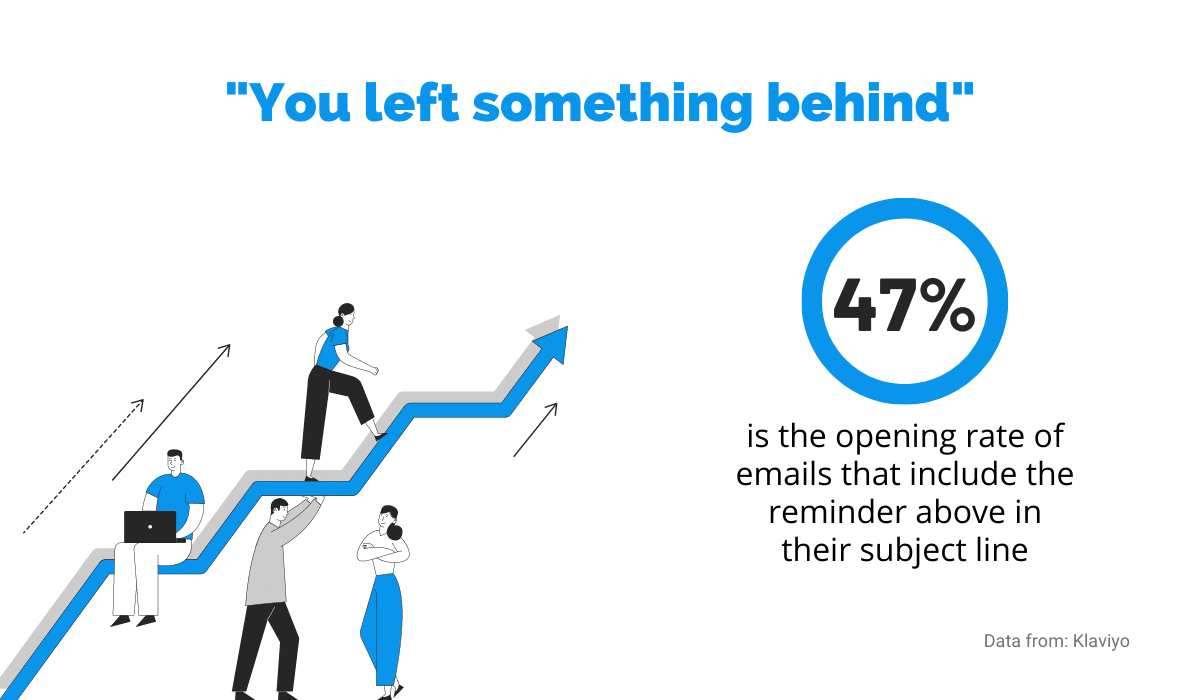
Source: Regpack
That doesn’t mean that all the other options are necessarily unsuccessful; it’s worth exploring different styles of subject lines to stand out from the rest.
For example, Hawaii Coffee Company uses personalization in the subject lines of their abandoned cart emails.
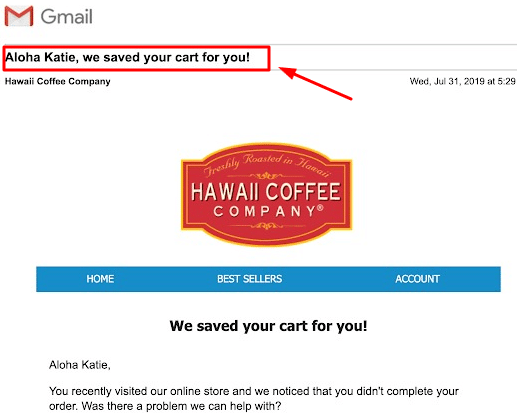
Source: bigcommerce
As you can see, they address the customer by name. When a customer sees their name in the inbox, they’ll likely pay attention to the email, and that’s already a big step towards winning them back.
Also, notice how the company sticks to its brand in the subject line by using the “aloha” greeting, which perfectly fits the company from Hawaii.
That’s another possible way of personalizing the subject line—even if you don’t have your customers’ names, you can use an informal greeting that comes across as casual and friendly.
Whether you choose the statistically most successful way of writing a subject line, a personalized approach, or something out-of-the-box, make sure that it’s attractive enough to get the customer to click on it.
Leverage the Power of Call-To-Action
When the customer opens your abandoned cart email, they should immediately know how to proceed with their purchase. A well-crafted call-to-action is vital in achieving that.
A call-to-action is simply an instruction to your customer which has the goal to provoke their response. In the case of an abandoned cart email, the goal is to point them to their cart so that they can finish their purchase.
You can do that by providing the customer with a link within the email, or, alternatively, a clickable button that leads to the customers’ carts. Campaign Monitor, for example, raised its click-through rate by 28% by using a button.
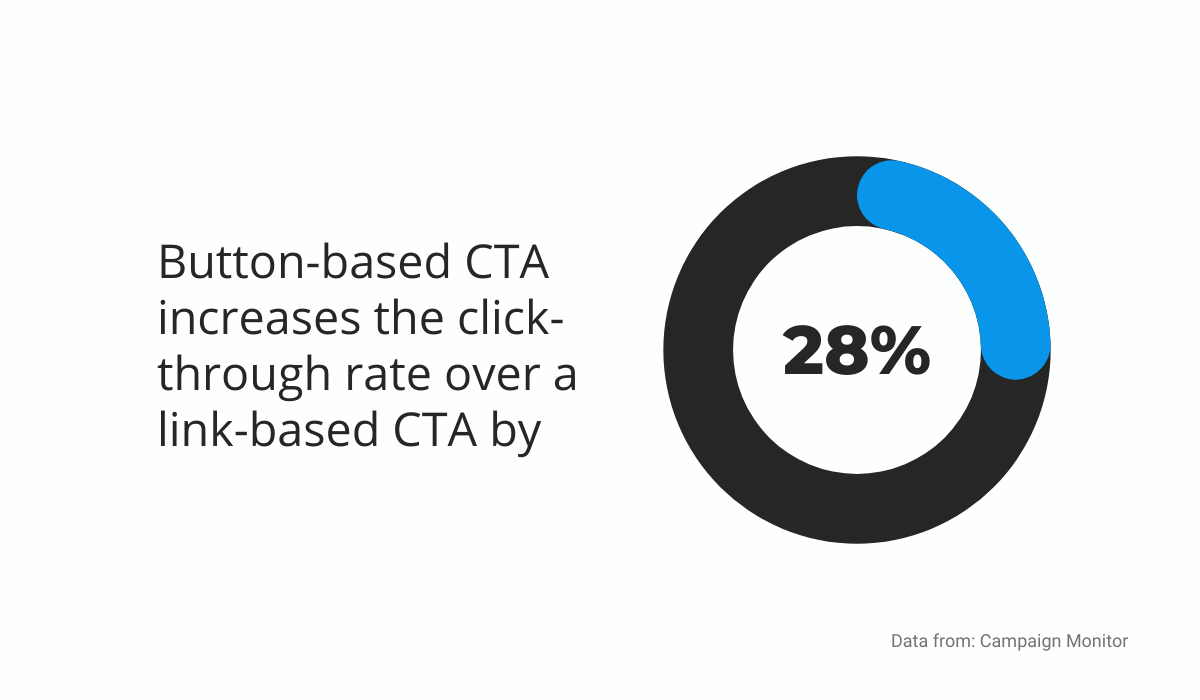
Source: Regpack
That’s logical—a button is easier to notice, you can design it to stand out in terms of color and size, and you can use a few simple words to encourage the customer to click on it.
Take a look at the Bearsville Soap Company’s email and a call-to-action button.
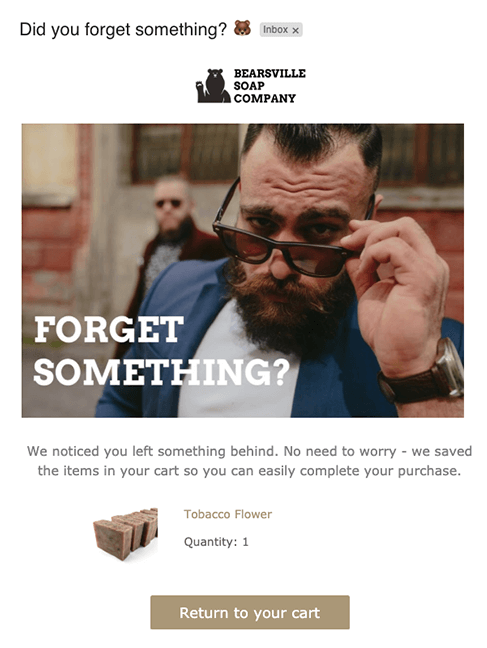
Source: activecampaign
Their CTA button is big and easy to see, so it’s clear to the customer what its purpose is.
Also, you should be careful about the wording on your CTA button.
The example above shows good use of direct language that isn’t so commanding to create discomfort in the customer. For instance, using words like “buy”, “spend”, or “pay” might be less than appropriate.
A powerful call-to-action can bring the customer back to your website. Using visual and textual elements wisely can mean the difference between them finalizing their purchase or leaving their cart and not turning back.
Show Them What They’re Leaving Behind
If your customer went on an online shopping spree on a few different websites, they might not even remember what they put in each cart.
That’s why it’s a good idea to show them what exactly is in the cart that they abandoned, like the abandoned cart email from ASOS does.
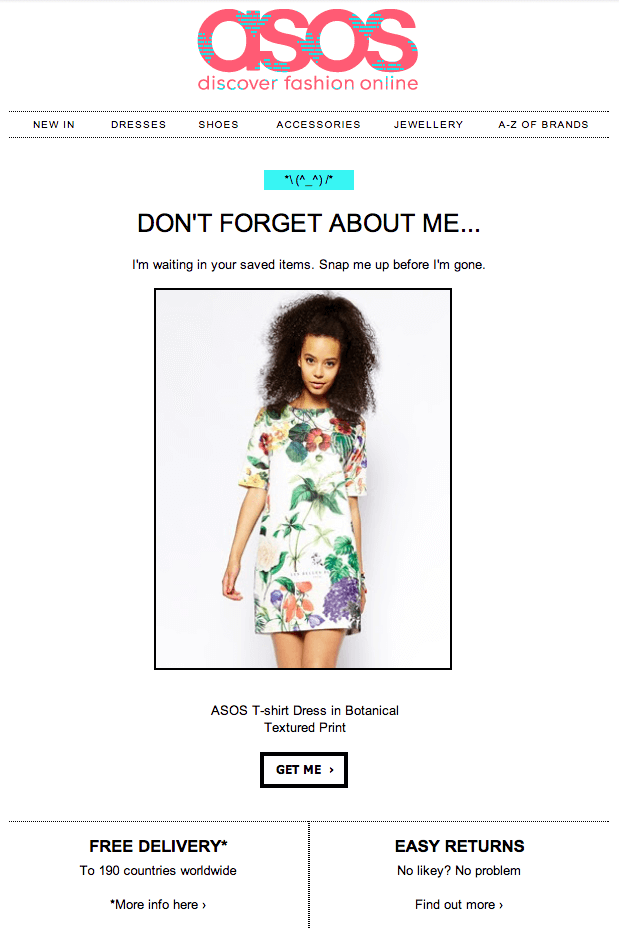
Source: optinmonster
The item from the abandoned cart is prominently featured (in this case, the t-shirt dress). That way, when the customer opens the email, they’re immediately reminded of what’s waiting for them.
That’s important because if the customer still doesn’t recall what item they meant to buy, it’s likely that they won’t bother visiting your website to check for themselves.
Convenience is a significant factor for customers—you shouldn’t add any extra steps in the purchase process if you can do without them.
This email does a few more things well—it conveys a sense of urgency, uses casual language, and offers free delivery. All of those are also proven ways to encourage customers to go back to their cart, so let’s look at that first one in more detail.
Make It Feel Urgent
To win back your customers, you can remind them that they don’t want to miss out on their desired item.
The fear of missing out (FOMO) is a phenomenon you can use to your advantage. The anxiety that they can miss out on something amazing if they don’t pay attention is common among customers.
According to TrustPulse, 60% of them make purchases because of that fear.
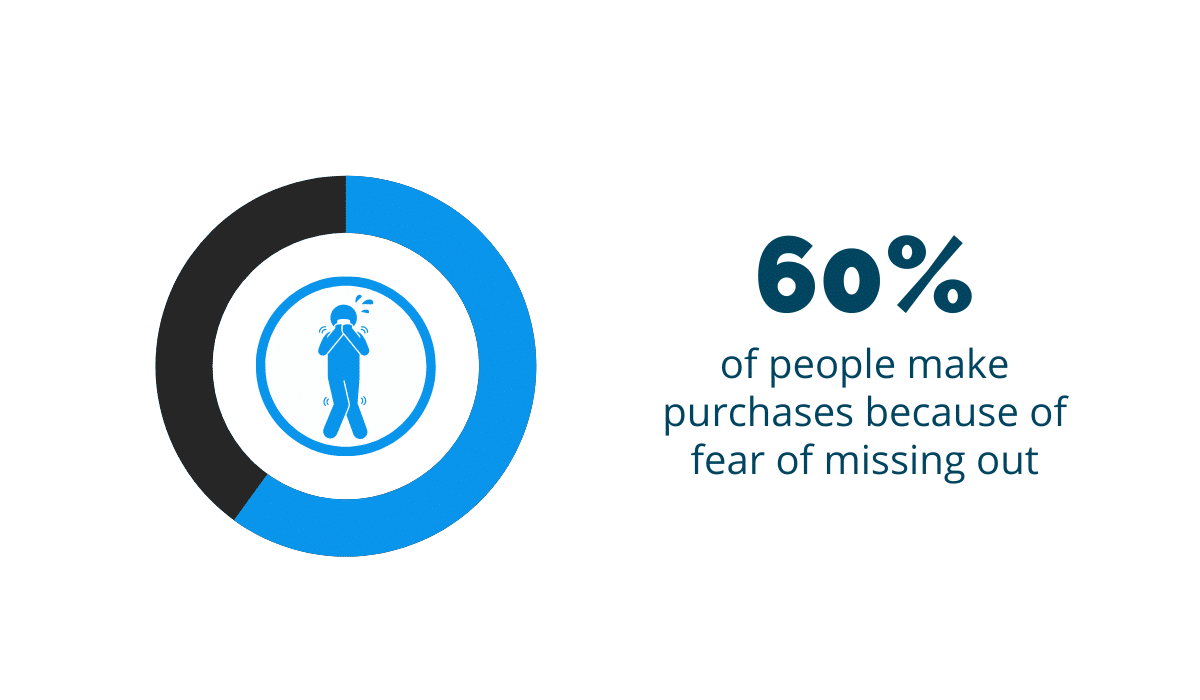
Source: Regpack
You can make your emails feel urgent in a variety of ways.
For example, you can do it by reserving items for a limited time, making clear that your limited edition items won’t be restocked, or letting your customers know that your items sell fast, so they better hurry if they want them.
Google Store composed their abandoned cart email with the latter in mind.
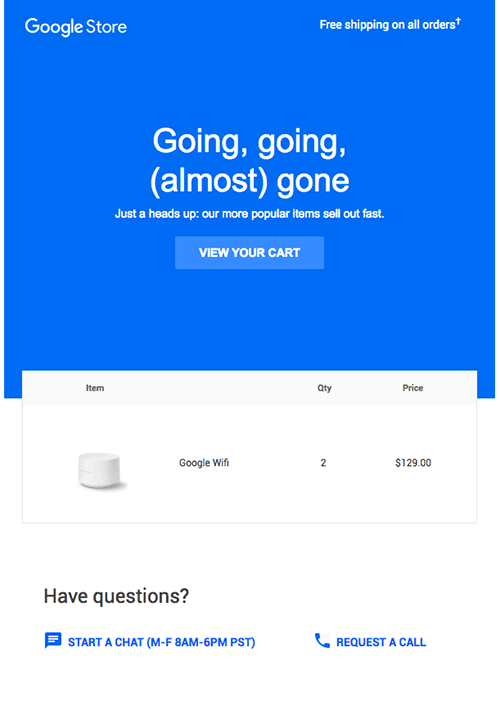
Source: activecampaign
The first thing the customer sees in the Google Store email is that something is “almost gone”. That line is followed by an explanation that their popular items sell out fast.
Furthermore, the customer can see what the item is and how to go to their cart.
Urgency can be a good motivator for customers to follow through with their purchases.
If they abandoned their cart because they were on the fence about purchasing a particular item, the fear of missing out could be a way to entice them to reconsider.
Offer Alternatives, Just in Case
Some customers might abandon their carts because they’re not entirely sure that the item meets all of their expectations. While they consider the matter, you can send them an email presenting some alternatives to consider.
That’s what Vans does in their abandoned cart emails. They show customers what’s waiting for them in their cart, but they also provide them with a list of similar items that might appeal to them instead.
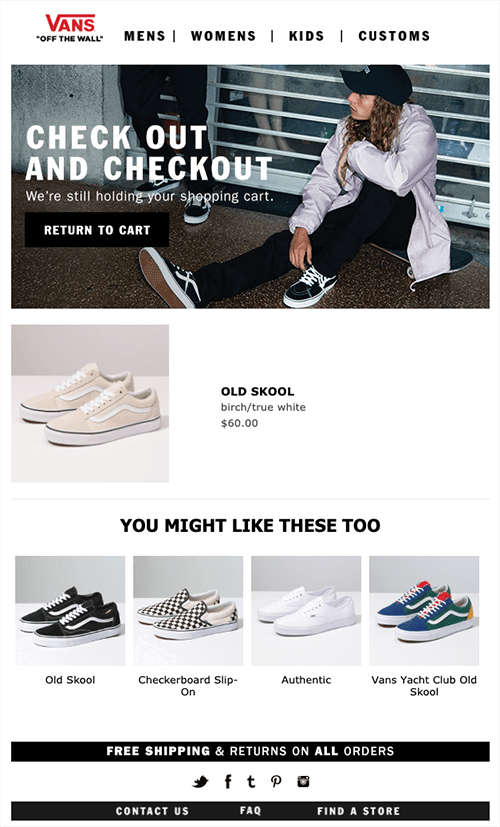
Source: activecampaign
In the example above, you can see they offered the same model of shoes in different colors and patterns, as well as two other similar models to be an alternative to the item in the cart.
However, it’s advisable to be careful with the wording. As you can see, in the email above, the alternatives aren’t overshadowing the main item.
They’re not items a customer should buy instead of the item in the cart; they’re the items the customer might also like. That way, you’re complimenting their choice, not implying that they made the wrong one in the first place.
Offering alternatives can be very beneficial in winning back your customers. Whether they still buy their original item in the cart or they opt for the suggestion you pointed out, it’s a win-win situation for you.
Persuade Them With Good Reviews
Showing your customers what others think of your services or product can be a very efficient way to persuade them to return to their abandoned cart.
That’s because people love to read reviews from others. According to Brightlocal, more consumers are reading online reviews than ever before.
For example, in 2021, 77% of consumers read reviews when looking for local businesses.
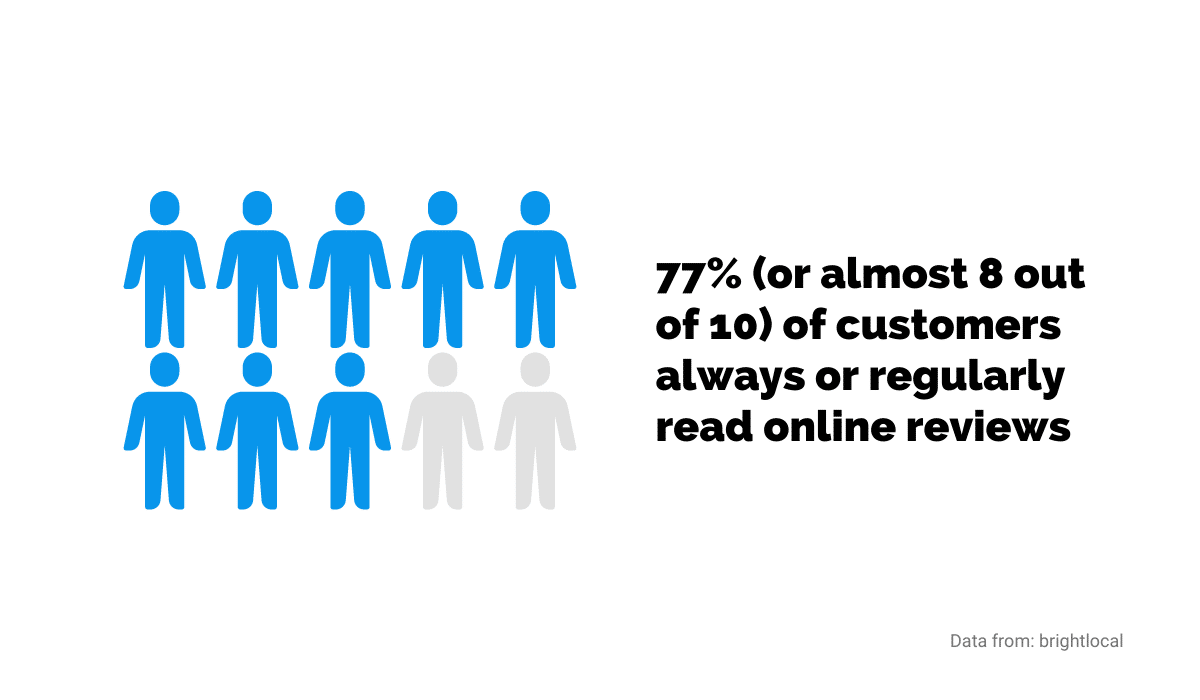
Source: Regpack
One of the companies aware of the power of online reviews is Adidas. Below is a part of their abandoned cart email, which showcases the customers’ opinions.
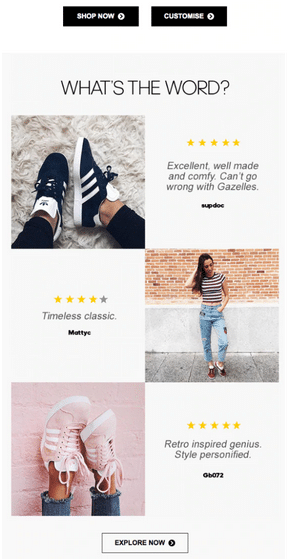
Source: reallygoodemails
As you can see, the reviews are brief and simple, commenting on the quality and style of the products.
There’s also a detail that implies that the reviews are genuine—not all of them are five-star reviews. That’s an effective way to indicate authenticity, so it’s unlikely that a customer will be turned away by a less-than-perfect score.
No matter the industry you are in, you can benefit from showcasing good client reviews on your website and social media. We follow the same practice.

Source: Regpack
The point isn’t to show how flawless your products are and how everyone adores your company—it’s to provide your customers with genuine opinions of people who completed their purchases.
That way, the customers who abandoned their cart might also follow through and have a good experience.
Offer a Discount or Free Shipping
In addition to all the elements of an abandoned cart email we mentioned earlier, you might want to consider giving your unsure customers an incentive in the form of reducing the price of items they have in the cart.
You can offer them a percentage-based discount, a dollar-based discount, or free shipping on their order.
According to research by Klaviyo, that’s a sound strategy: abandoned cart emails that contain a discount have an above-average open and click-through rate.
Below is an example of an abandoned cart email by MVMT Challenge, a fitness platform that offers various programs.
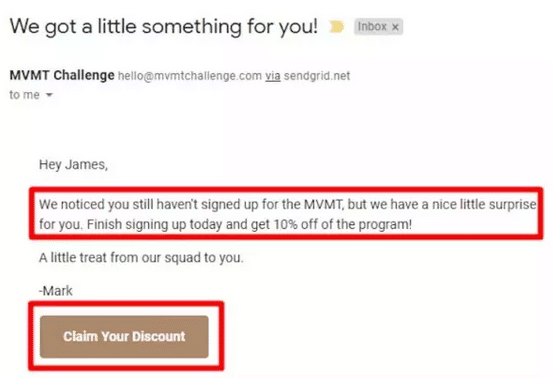
Source: uscreen
Their customer didn’t finish signing up for the program, so they offered a percentage-based discount as an incentive for the customer to do so.
Offering discounts is simple if you use an automated billing software like Regpack.
With Regpack, you have lots of options for customizing your discounts, including triggers to apply them automatically or setting them to work for a period of time.
Also, you can set up percentage-based or dollar-based discounts, like in the example below.
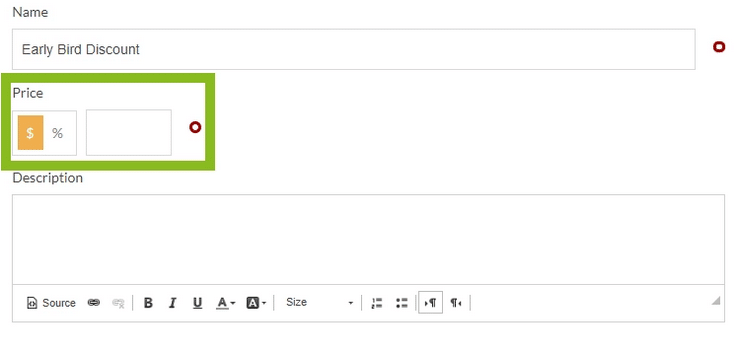
Source: Regpack
Regpack software also allows you to set an expiration date on your cart, so abandoned items get automatically cleared after some time.
Offering discounts and free shipping are proven strategies for winning back your customers.
Think of it as an investment; for a small amount of money, you can gain a loyal customer for your business.
Use Inside Jokes With Customers
Humor can make your email stand out from the rest of the marketing emails that your customers receive daily.
However, keep in mind that using jokes in abandoned cart emails isn’t as straightforward as writing a generic message. Humor is highly subjective, and just because you find something hilarious doesn’t mean that your customers will feel the same way.
Nevertheless, if you get it right, your emails could be a breath of fresh air in your customers’ inboxes. For example, below is an email from Whisky Loot, a whisky subscription service.
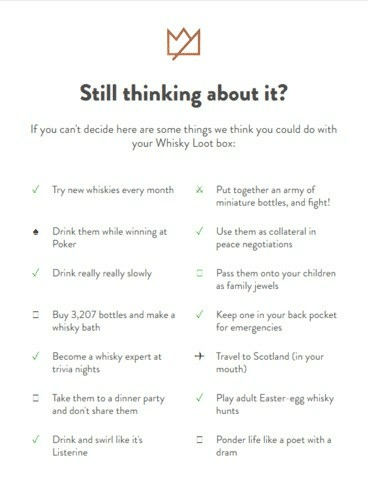
Source: retainful
They give 14 suggestions that are supposed to encourage customers to make a purchase. Instead of simply listing reasons why their products are great, the company opted for a playful approach.
Among their suggestions are ideas like putting together an army of miniature bottles, making a whiskey bath, or taking them to a dinner party and not sharing them with anyone.
These jokes are something that the company feels is on brand and something their customers positively respond to. That’s an important factor to consider when adopting such an approach in your emails.
A lighthearted approach to abandoned carts and using jokes to win back customers can turn a dry and dull email into one that will pique their interest and have them reconsider buying from your business.
Include Wordplay With Your Brand
As we mentioned in the previous section, using humor is great—if it’s appropriate for your business and if you know how to be funny. But if jokes aren’t a good fit for your emails, another way to be casual in them is to use entertaining wordplay.
For example, here’s an abandoned cart email from Dote.
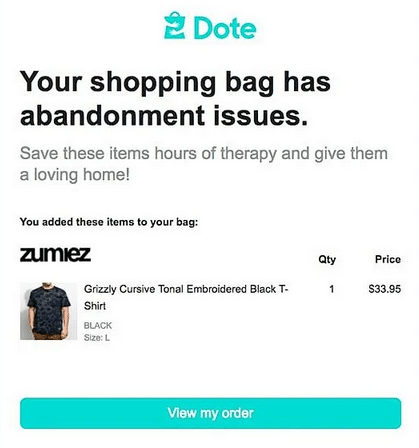
Source: blog.hubspot
In this brief email, they use humorous wordplay to attract their customers’ attention.
The bold text “Your shopping bag has abandonment issues” is a clever way to remind a customer that they abandoned their cart, and it’s followed by a suggestion to “save these items hours of therapy”.
Using puns, unusual sentences, or double entendres requires a high level of skill, particularly for purposes like encouraging customers to spend money on your products or services.
However, it can be very engaging, and it’s a sure way to stand out from the many generic abandoned carts other companies use.
Remind Them Their Items Are Safe With You
Simply reminding your customers that items they left in the cart are still there, waiting for them, can be a good way to encourage them to return to your website and finish the purchase.
For instance, in their abandonment cart email, The Mountain includes a reminder that they saved all the items in the cart, so the purchase is simple and straightforward.
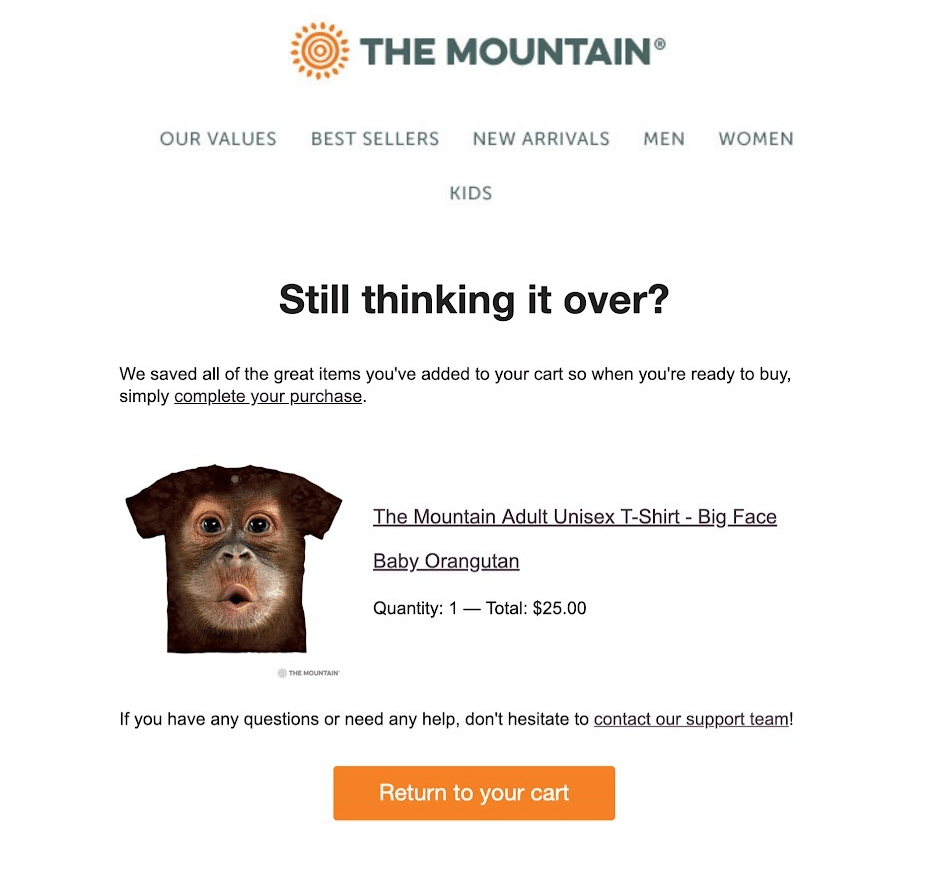
Source: bigcommerce
As you can see, they also included a call to action in the same sentence to emphasize further that returning to a cart full of items is very simple.
Also, this method of reserving items can be even more efficient when combined with invoking a sense of urgency, which we’ve mentioned in one of the previous sections of this article.
For example, if the customer knows that your products or services are popular and can sell out, the fact that you’re reserving them can be a powerful incentive to go through with a purchase.
Also, the bond between your business and your customer strengthens—customers feel that you value them enough to reserve your in-demand products for them.
Conclusion
Having customers fill up their carts and leave is like having money in a transparent locked box. It just sits there, and you can’t use it to boost your business.
Luckily, you can get some of that money with a good abandonment cart email. Of course, you can’t persuade every customer to finish their purchase even if you follow every advice and use every strategy.
However, you can still win back enough of them to see significant results that can add up over time. If you use the ideas from this article, that’s a very achievable goal.


